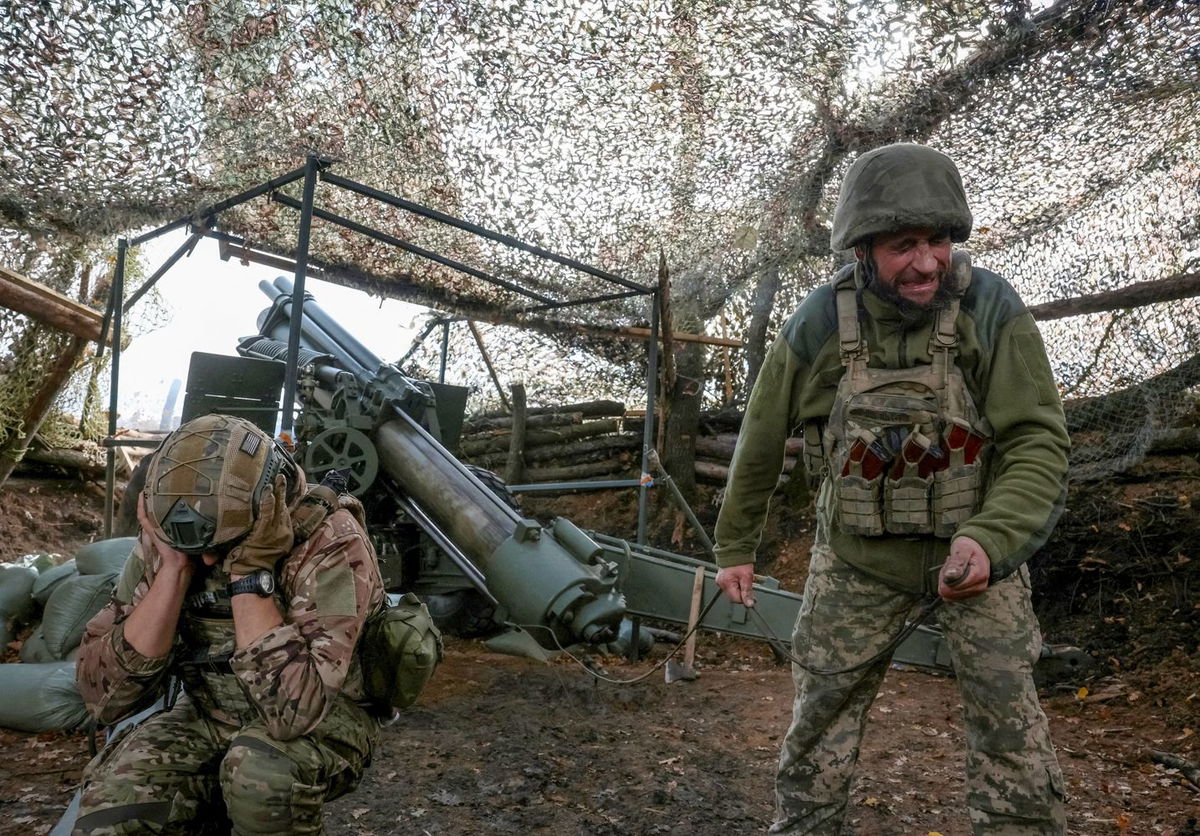Russian forces, aided by heavy aerial bombardments, edge forward in Ukraine

By Tim Lister and Svitlana Vlasova
(CNN) — Russian forces are still edging forward along several parts of the long front line in Ukraine – despite yet another call from US President Donald Trump for a combat freeze along existing lines.
Both sides “should stop where they are,” Trump said on social media Friday, after meeting with Ukrainian President Volodymyr Zelensky in Washington DC.
But the Russians seem intent on locking in gains before the onset of winter. On Friday, they used a record 268 guided aerial bombs, according to the Ukrainian military, compared to an average of 170 to 180 per day in recent weeks. These bombs, which carry a payload of up to 1,500 kilograms (3,307 pounds), largely target Ukrainian forces and infrastructure close to the front lines.
The Russians have also continued nightly barrages of drones and missiles against targets across Ukraine, especially against energy infrastructure. In September, an average of more than 180 drones were launched every night, more than twice the number at the beginning of the year.
In recent days, the Ukrainians have acknowledged that about 20% to 30% of those drones are not being intercepted.
In the last week, Russia has used more than 3,270 attack drones, 1,370 guided aerial bombs, and nearly 50 missiles of various types against Ukraine, Zelensky said Sunday.
To some analysts, the Kremlin has no incentive to compromise as its forces improve their battlefield performance.
“Moscow has developed fresh ways of using drones to find and kill Ukrainian soldiers and to destroy Ukrainian assets, turning what was once an area of weakness into an area of strength,” writes long-time Russia analyst Dara Massicot in Foreign Affairs.
“It has built better missiles and created more rugged and capable armored systems. It is giving junior commanders more freedom to plan,” Massicot adds.
One town where Ukrainians are under growing pressure is Kupiansk, in the northern region of Kharkiv. Russian troops have advanced to the north and east of the town, which has been under siege for more than a year.
A well-known Russian blogger, War Gonzo, said Saturday on Telegram that there was also fighting in the center of Kupiansk. About 80 Russian troops had infiltrated the town, the Ukrainian military acknowledged on Thursday, and its defenders were “doing everything possible to clear Kupiansk of Russian invaders and prevent the accumulation of enemy infantry in the city.”
One Ukrainian military blogger – Bohdan Miroshnikov – said this week that the Russian tactic “may lead to control (if reinforcements can arrive and consolidate their positions).” He added that while the situation was very complicated, “full occupation of the city is still a long way off.”
Also in Kharkiv region, closer to the international border, the Russians have claimed advances near the town of Vovchansk, including the capture of a nearby village.
In Donetsk, heavy fighting continues around Pokrovsk, with a Russian military blogger claiming Saturday that Russian troops are advancing to the northwestern outskirts of the city. For its part, the Ukrainian military has claimed to have recovered some 70 square miles of territory in the Pokrovsk area over the past two months, in a series of counterattacks.
Oleksandr Syrskyi, the commander-in-chief of Ukrainian forces, insisted Friday that the Russians did not have “the strategic initiative. At the cost of enormous losses, the adversary has achieved only minor advances in certain sections of the front.”
“Ukrainian warriors have ceased the enemy’s spring-summer offensive campaign,” Syrskyi added.
Russia has gained about 120 square miles of territory in the past four weeks, about half of what it seized in the previous four weeks, according to the Belfer Center for Science and International Affairs at Harvard University.
And Russian advances come at great cost. As many as 250,000 Russian soldiers have died in Ukraine, with over 950,000 total Russian casualties, according to an estimate in June by the Center for Strategic and International Studies, a US-based think tank.
Nearly 14,000 Russian soldiers have been killed or wounded in the Pokrovsk area alone since late August, according to Ukraine’s military command. CNN cannot verify battlefield figures.
In the face of these losses, the Russian defense ministry appears to be changing the way it recruits additional personnel. In recent weeks, Russian regions have begun paring back the generous sign-on bonuses used to attract recruits.
The Kremlin has traditionally relied on financial incentives to attract volunteers and avoid another mobilization, but the practice “is likely hitting diminishing returns, which may compel the Kremlin to adopt an alternative approach,” according to the Washington-based Institute for the Study of War (ISW) think tank.
“Russia may begin to mobilize members of Russia’s active reserve on a rolling basis to sustain its combat operations in Ukraine,” according to ISW.
For its part, Ukraine is betting on long-range strikes targeting Russian energy infrastructure to persuade the Kremlin to accept negotiations. It has stepped up production of its own cruise missiles, although it has been unable as yet to persuade Trump to supply Tomahawk missiles.
Since the beginning of the year, successful strikes haved been carried out against 45 facilities in Russia’s fuel and energy sector, according to Syrskyi. Industry analysts estimate that one-fifth of Russia’s refining capacity has been disrupted.
But despite the casualties and damage to Russia’s economy, Russian President Vladimir Putin has shown no sign of agreeing to a ceasefire or negotiations with Ukraine.
More than 1,300 days since the full-scale Russian invasion began, as one expert puts it, “Ukraine cannot destroy Russia’s war capacity, while Russia appears unable to militarily defeat Ukraine.”
The-CNN-Wire
™ & © 2025 Cable News Network, Inc., a Warner Bros. Discovery Company. All rights reserved.
